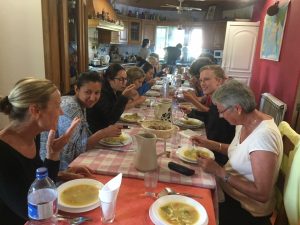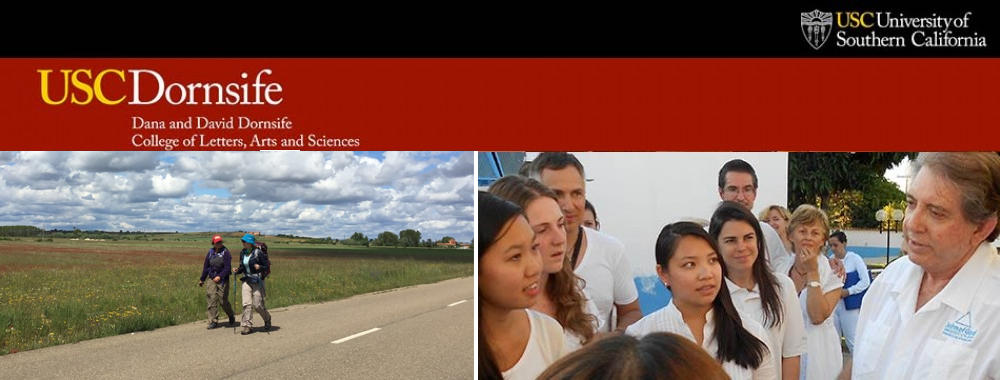“What was one of the highlights from your Camino?” I asked a 39 year old man from Atlanta, Georgia. At first, his response surprised me. “It was an open air, cold water, mattress on the floor…” I stopped him. I clarified “highlight, not lowlight…” He continued “but it was an abandoned castle with the walls still up, with a communal dinner, yoga, and as I woke up once at night I could see thousands and thousands of stars. It was beautiful, and bonding for all of us.”
What does it take for an albergue to create this bond amongst pilgrims? I asked an Australian man the same question, and he responded with the same location, the abandoned castle of San Antón along the French route. I was surprised, as his first explanation included the no roof, no electricity, no cell service and cold showers as well. He elaborated and said “there was this overwhelmingly calm aura about the ruins – almost as though they were protecting the pilgrims sleeping inside.”

Dinner at Casa Fernanda.
Author is second from left.
Along the Portuguese route, Casa Fernanda created a similar bond amongst the pilgrims that stayed there. The communal dinner, the encouragement of sharing, singing, and especially dancing created warm feelings of closeness. With a few glasses of vino verde, some boldness on the host’s part to get the party going, with the help of 8 energetic young Americans, a bond was created between a Danish couple, a German couple, a Dutch woman, an American couple and a California woman. Throughout the rest of the trip there remained a friendship and excitement between our groups.
The sweet memories pilgrims have created in albergues made me wonder what an albergue of my own would be like. If I were to open my own, I would definitely try to take aspects from these positive experiences and memories from other albergues. Some of the necessities are a communal meal, intentional conversations, an open atmosphere and perhaps singing and dancing with some drinks can’t hurt. Something that the best ones seem to have in common is being “donativo”, that is, donation based. This seems to create a warmer, less industrial feel to an albergue.
Besides a social environment, there was also a good example for outward appearances with one place along the Portuguese route. From one albergue called Ninho, it was beautifully decorated and a cute environment. The wood, homey feel, and architecture made it feel like I was staying in a home and not simply staying at the bare minimum along the Camino. Part of the experience is the look of the place, but as taken from San Antón it is not everything. I think the biggest thing you can contribute with an albergue is a welcoming and homey environment, filled with warmth, laughter, and a shared experience to bond the pilgrims. After long days of walking, all that takes is a good meal, safe place to sleep, and perhaps one or two people taking the lead to be open and share in conversation.
